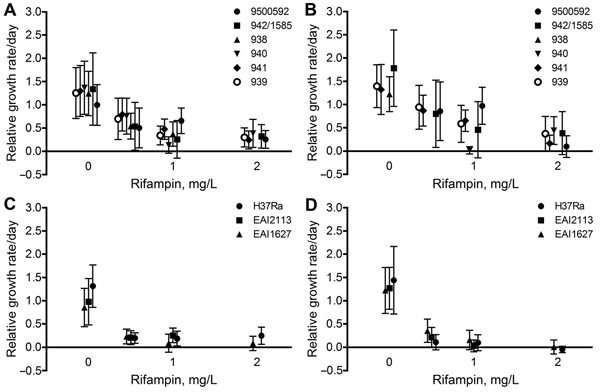Volume 20, Number 11—November 2014
Letter
Mycobacterium tuberculosis Beijing Genotype Resistance to Transient Rifampin Exposure
Figure

Figure. Eight-day-old microcolonies (≈102 cells per colony) of a panel of Mycobacterium tuberculosis Beijing strains (A, B) and East African Indian strains and strain H37Ra (C, D). Growth of the strains was monitored after 4 hours of exposure to different concentrations of rifampin. For all colonies, the growth rate relative to preexposure growth rate was calculated at 0–1 days after exposure for a median of 889.5 (interquartile range 478.75–1611.25) colonies (left panels) and 1–5 days after exposure for a median of 363 (interquartile range 241.25–843.00) colonies (right panels) per strain and per condition. Plots are averages ±SD (indicated by error bars). The experimental conditions failed to totally inhibit growth of most Beijing colonies even at 5 days postexposure, whereas for the non-Beijing strains, virtually no growth was detectable at 5 days postexposure.